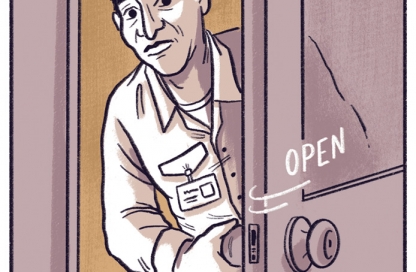Virtual Reality storytelling is in its infancy
Virtual reality storytelling may just be starting, but the results so far have been fantastic.
VR Cinema recently ran a virtual reality meetup where storytellers showed off their latest attempts to tell a story — even when the audience controls the perspective. As it turns out, that’s a real challenge. When you want to spin a yarn from point A to point Z, how do you keep the audience’s attention on the story when they can look anywhere anytime?
As it turns out the answer is complex and still a few years of experimentation away. Some filmmakers opt to pause the main action until the viewer focuses again. Some filmmakers go for the “HEY! OVER HERE!” approach where the characters act as guides. When you ponder the complexities of telling a good story and then you ponder the complexities of keeping someone’s attention, it can start to overwhelm.
Video games can certainly help guide the way. Half-Life 2 is an example of a game-on-a-rail where the illusion of free choice wove through a compelling story and satisfied almost everybody. But when you remove that interactive component, VR films will struggle with finding effective methods to tell the story within the chaos of an audience’s free will.
In the end, someone will make a VR film that is so wonderful and so engaging that we all can’t help but look where the Director wants us to look. This would effectively turn the VR element into a bonus for seeing the film a second time. After all, if you’ve already enjoyed the story then seeing it a second time is the perfect way to see what else is going on in every scene.
We’ll see how storytelling in the VR age shakes out as headsets start to hit the stores. In the meantime, the theoreticals and small experiments surround the virtual reality experiment are tantalizing brain zaps for those of us who love to tell stories.


